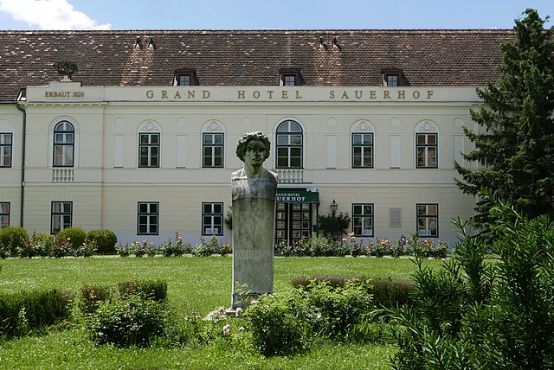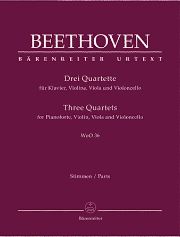Mozart before your eyes
Beethoven kept the autograph of these early quartets with him for the rest of his life.

Ludwig van Beethoven created the three piano quartets WoO 36 at the age of 15. His teacher, the Bonn court organist, opera conductor and composer Christian Gottlob Neefe, had commented on him two years earlier: "He would certainly become a second Wolfgang Amadeus Mozart if he progressed as he had begun." The young Beethoven played and studied Mozart's works; these three early compositions are based on his violin sonatas K. 296, K. 379 and K. 380 in terms of form and structure. The piano quartet genre was not yet popular at the time, Mozart's masterpieces K. 478 and K. 493 were only written in those years. The combination of piano, violin, viola and violoncello was evidently a result of Beethoven's relationship with the family of court chamberlain Gottfried Mastiaux, whose children played these instruments.
Ludwig van Beethoven kept his autograph of these quartets throughout his life. He later used individual themes in the piano sonatas and in the Piano Trio in C minor op. 1 No. 3. This surviving autograph is also the authoritative source for the new Urtext edition published by Bärenreiter. The editor Leonardo Miucci, research associate at the Bern University of the Arts, supplements his introduction with insightful notes on the performance practice of Beethoven's piano music from that period.
Are these early piano quartets already "definitely Beethoven"? Certainly: the later "revolutionary" remains mostly hidden, and the string writing does not yet resemble that of the string quartets (but it is easier to play!). But this is beautiful chamber music that need not fear comparison with other works of its time and is sometimes quite dramatic!
Ludwig van Beethoven: Three Quartets for Piano, Violin, Viola and Violoncello WoO 36, edited by Leonardo Miucci, Parts: Piano (score) and strings, BA 9037, € 48.95, Bärenreiter, Kassel








